If you’re an Overlanding enthusiast, the Land Rover Defender needs no introduction. Like the Toyota Land Cruiser, the Land Rover Defender is inspired by the legendary Willys MB. And like the Willys, it has earned a place in automotive history as some of the most iconic 4×4 SUVs and trucks in the world.
Let’s dive in and explore some of its history to better understand how the Defender evolved over time.
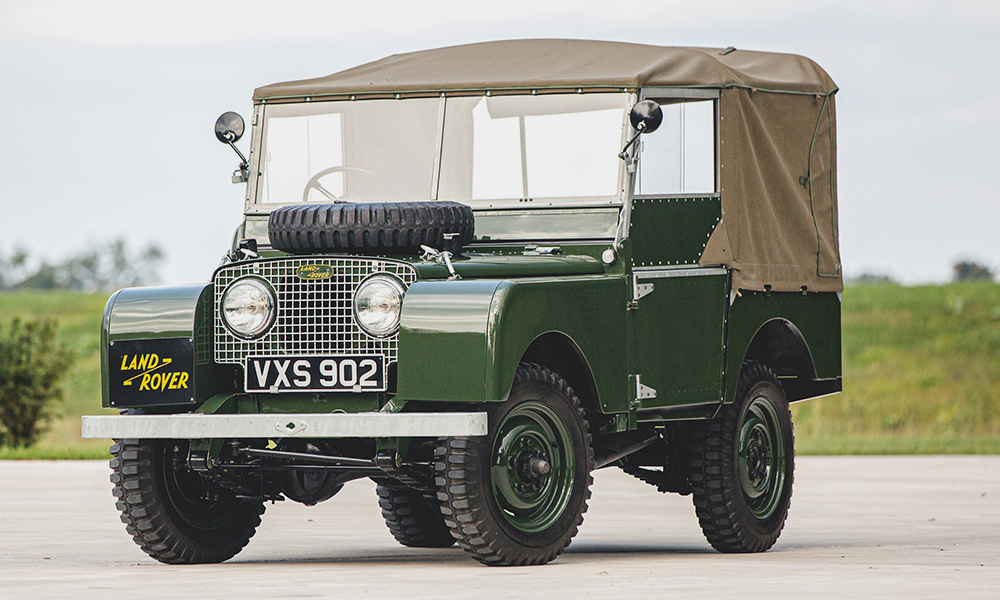
Land Rover Defender Overview – The Good & The Bad
The Good: The Land Rover Defender has won the hearts of off-road enthusiasts not just because it is an iconic vehicle used by British royalty or because it appears in a wide array of Hollywood movies. (Looking at you, 2001 Tomb Raider.) It has earned the respect of connoisseurs for its proven ability to take you anywhere, no matter the weather or terrain conditions. It’s a work horse. We have sat in the drivers seat of many a classic Defender and marveled at its ability to Billy Goat up a steep dirt incline, or power over rocks. It’s a dream at 7-12 mph off pavement.
The Bad: Try to get a Defender to accelerate to 55 mph quickly and still be able to have a conversation without yelling. Or getting single digit MPGs because the wind happens to be blowing against you. Or working up a sweat turning the wheel…you get the picture. The Defenders are also known for their high maintenance nature. There’s a reason people lovingly say Land Rover Defenders have been making mechanics for 70+ years.
What is the end result when you merge both the good and the bad together? You get a passionate driver/fan base that sticks with the Land Rover brand and celebrates the good while completely embracing the… less than ideal.
Regardless of the mechanical realities of the Land Rover Defender, its box shape and rugged design spark dreams of adventure. It’s one of those vehicles that most people drive on pavement with an attitude of “Well, I choose to be on pavement right now, but if I wanted to I could be driving <insert epic remote destination>.”
And because of the evolution of the Defender they would be right.
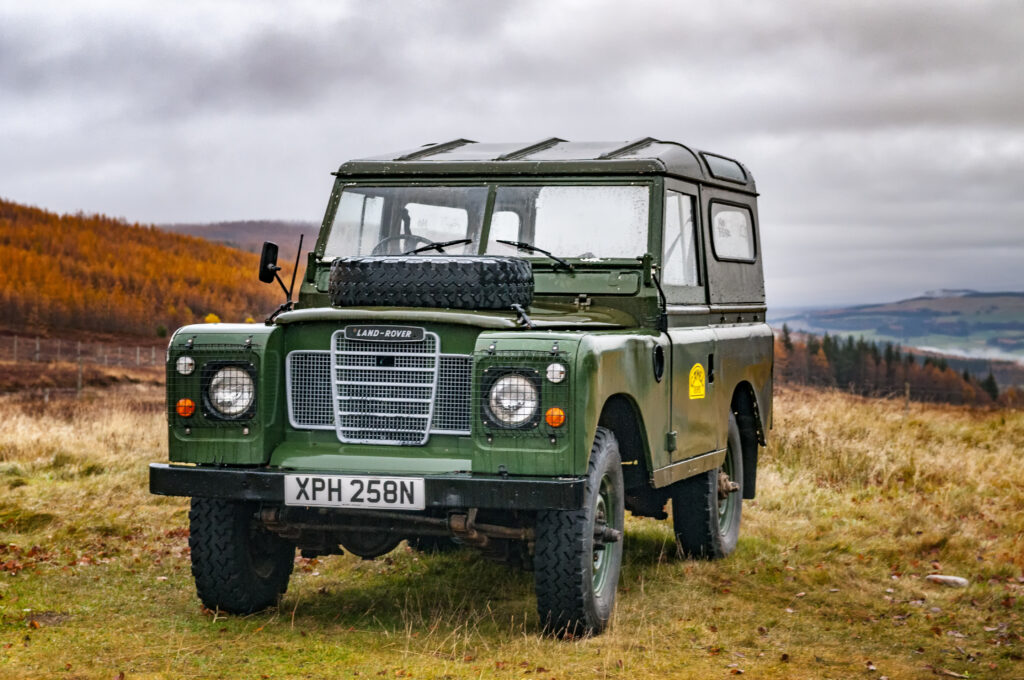
Defender Evolution in a Nutshell
1948-1958, Land Rover Series I
Although the prototype based on the Willys dates back to 1947, it was not until 1948 that the Rover Company officially launched the “Land Rover” at the Amsterdam Motor Show. The first model, later known as the “Series I,” was a pick-up truck with a 1595cc, 50 hp gasoline engine inherited from the Rover P3. Later that year, the first Land Rover Station Wagon with an 80-inch wheelbase was introduced.
The original design underwent few changes during this decade. The most notable was a facelift in 1950 and a lengthening of the wheelbase to 86 and 107 inches in 1954, which was later changed to 88 and 109 inches in 1957. It is worth noting that from its humble beginnings, the Land Rover featured 4WD.
1958-1971, Land Rover Series II
It is during this period that the utility vehicle defined its unique style, which has served as an inspiration to this day. In addition to the changes in its body, the available engine options were improved during these years, which contributed to the Land Rover’s recognition as one of the toughest SUVs in the world.
1971-1985, Land Rover Series III
While the overall design was little affected, 1971 saw the introduction of the Series III, which featured a full-width dashboard and a new headlight design and location. Among the notable events that occurred during this period were reaching one million units built and the introduction of the V8 engine option for the first time.
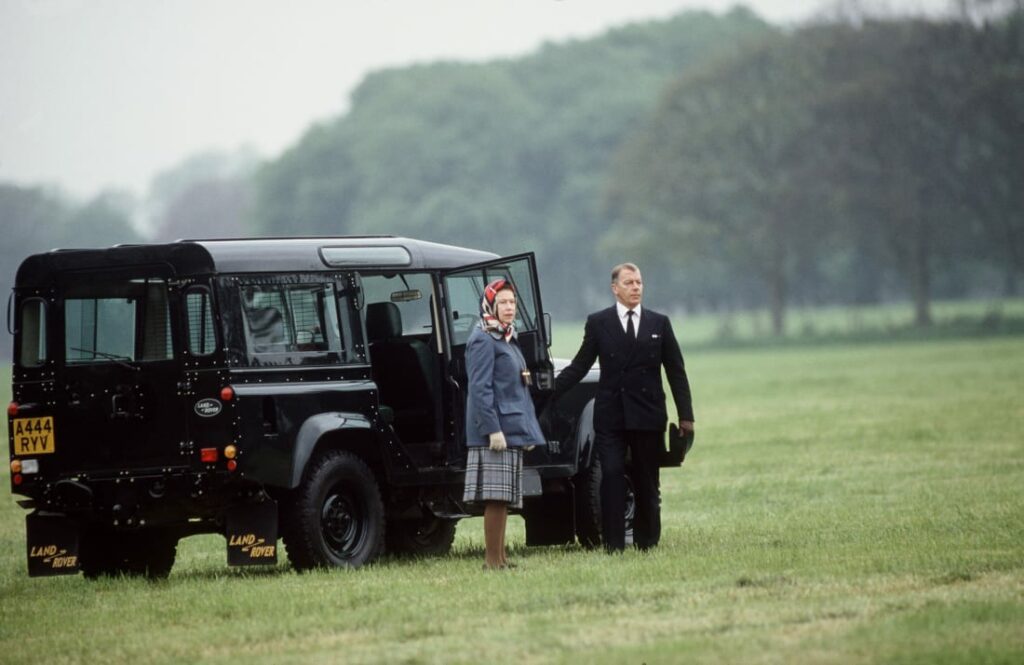
1983-1990, Land Rover 90 and 110
During 1983, as part of its diversification strategy, Rover changed the official name to 90 and 110. This designation was a direct reference to the wheelbase of each model, with the 90 being a three-door short chassis and the 110 the traditional 5-door station wagon. The new versions replaced leaf springs with coils (inspired by the Range Rover) and introduced a new 5-speed manual gearbox.
1990-2016, Land Rover Defender
To end the confusion generated by the 90 and 110 designations, Land Rover took advantage of the new iteration of the SUV to relaunch the original Land Rover with the name we all know and love, Defender. The “new” Defender reinstated the three classic versions, now called the D90, D110, and D130, all of which featured high-performance turbodiesel engines. Major mechanical upgrades were introduced during this generation, such as the 6-speed gearbox and Euro V-compliant engines. The safety and comfort of the SUV were also significantly enhanced.
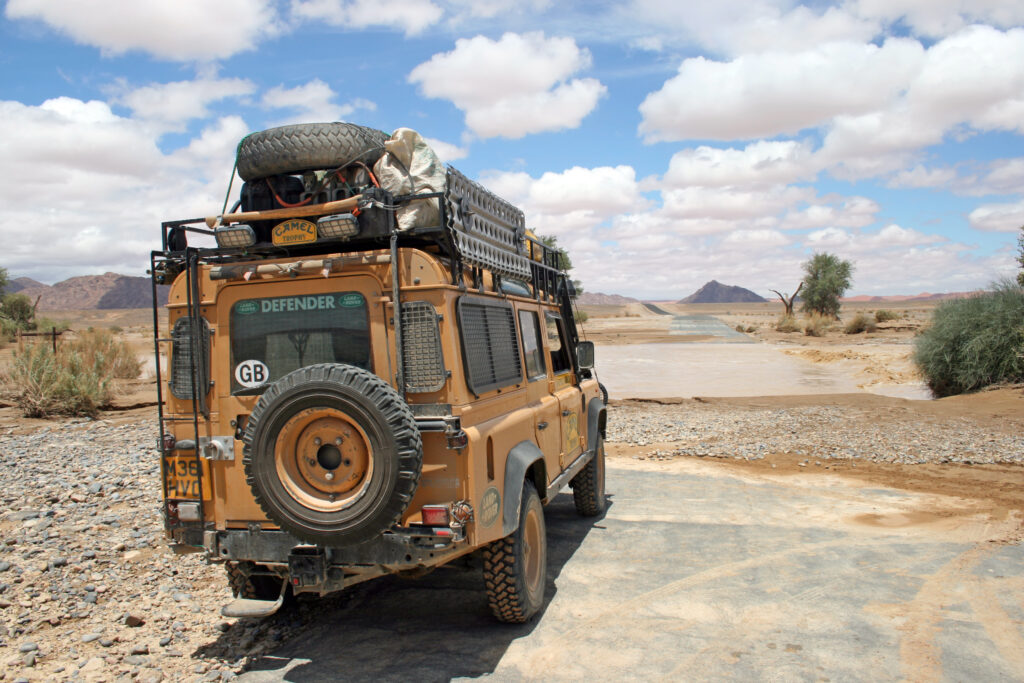
The Camel Trophy Years
It is hard to look at the Defender from an overland viewpoint without imagining the iconic stature of an original Camel Trophy expedition truck. Sponsored by Camel Cigarettes, the Camel Trophy’s goal was to place individuals from all walks of life, in the most capable vehicles on the planet, to show what the vehicles were capable of in the hands of “just plain folk”.
Although the Camel Trophy races became synonymous with the Land Rover Brand, it actually started in 1980 with three Jeep-equipped German teams in the Amazon Basin. After that first year, and for the next twenty, Land Rover supported the race events with the Defender participating from 1983 – 1986 and 1988 – 1989. The Discovery series ran the race with Defender support from 1990 – 1998.
During their time, the Defenders were specially equipped by Land Rover Special Vehicles for the rigors of the expedition races. The races took place in the most remote destinations in the world including Brazil, Australia, and Indonesia. The vehicles were only used for one event with some purchased by race participants afterwards. Some vehicles were left behind in the country the event was held, and all became highly sought after in the years to follow.End of an Era.
After nearly 70 years of uninterrupted service, in 2016, Rover announced the decision to retire the iconic Land Rover Defender from its SUV lineup. As expected, the outcry from the worldwide enthusiast community was overwhelming. Whether public pressure had anything to do with the Defender’s return 4 years later (or if it was all a big marketing ploy) is a matter of speculation. What is certain is that the beloved SUV returned in 2020 as the Land Rover Defender L663.
2020-present, Land Rover Defender L663
After a brief period of absence, the Defender was reintroduced to the market in 2020. While its exterior and interior design resembles the classic Series II, it is safe to say that the new generation Defender is a completely revamped SUV to meet the demands of our times. The all-new Land Rover Defender comes in two versions that use the brand’s classic designations, the Defender 90 and Defender 110.
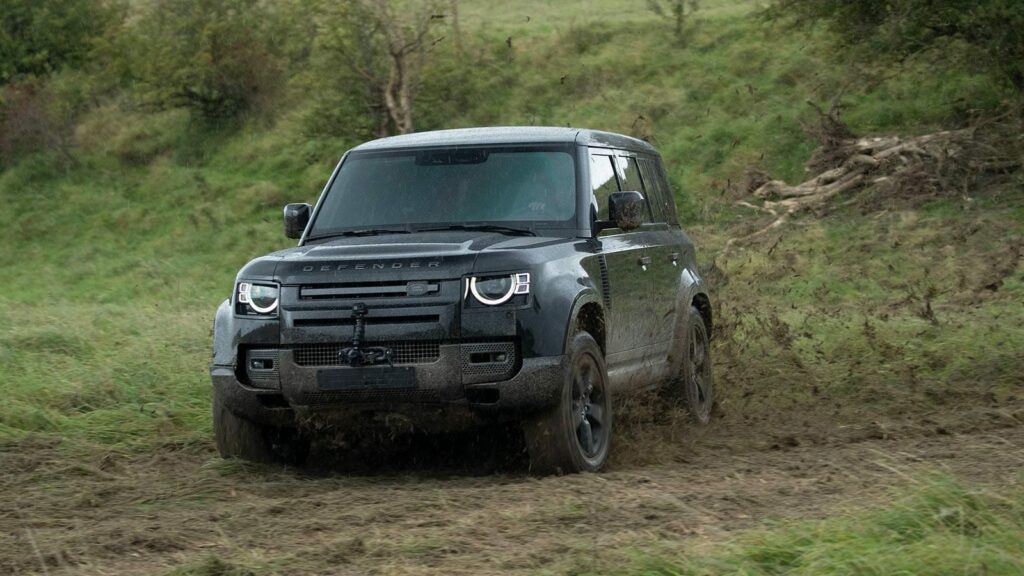
Unlike the spartan design used in the Land Rover Defender of the 90s, the new model comes prepared with all the amenities and technology you can expect in a modern SUV.
We’re talking about 3D surround cameras with 360-degree Parking Aid, LED headlights, 10″ Touchscreen Infotainment system, 6 airbags, a generous driver assistance package, and much more. Other technologies included are Wade Sensing, Driver Condition Monitor, Twin-speed transfer box, all-wheel drive, and Terrain Response, just to mention a few 4×4 focused features.
In terms of engine options, you can choose from a conventional 2L engine with 200 hp and 430 Nm of torque all the way up to a 3L hybrid engine with 400 hp and 550 Nm of torque.
All in all, the new iterations of the Defender are in line with the luxury and comfort that has characterized Land Rover for years while maintaining most of its rugged capabilities.
From Utility Vehicle to Iconic Figure of Overlanding
To understand why the Land Rover Defender is an iconic figure in the world of Overlanding, it is first necessary to take a step back and think about “the perfect SUV” that you would want to drive during your adventures.
You need a 4WD drivetrain and suspension ready for anything. You need a rugged design capable of withstanding the elements and enough space to carry all your Overlanding gear. You need to also add water and food to the pack out. It would require different configurations and have a wide range of aftermarket accessories available. The Land Rover Defender meets and, at times, exceeds all of these requirements. This largely explains why it maintains its hold over the overlanding world.
All that being said, what do you think? What is your favorite version of the Defender? Do you go for the proven reliability of the classic Defender or the comfort of the new Defender? Let us know your opinion in the comments.

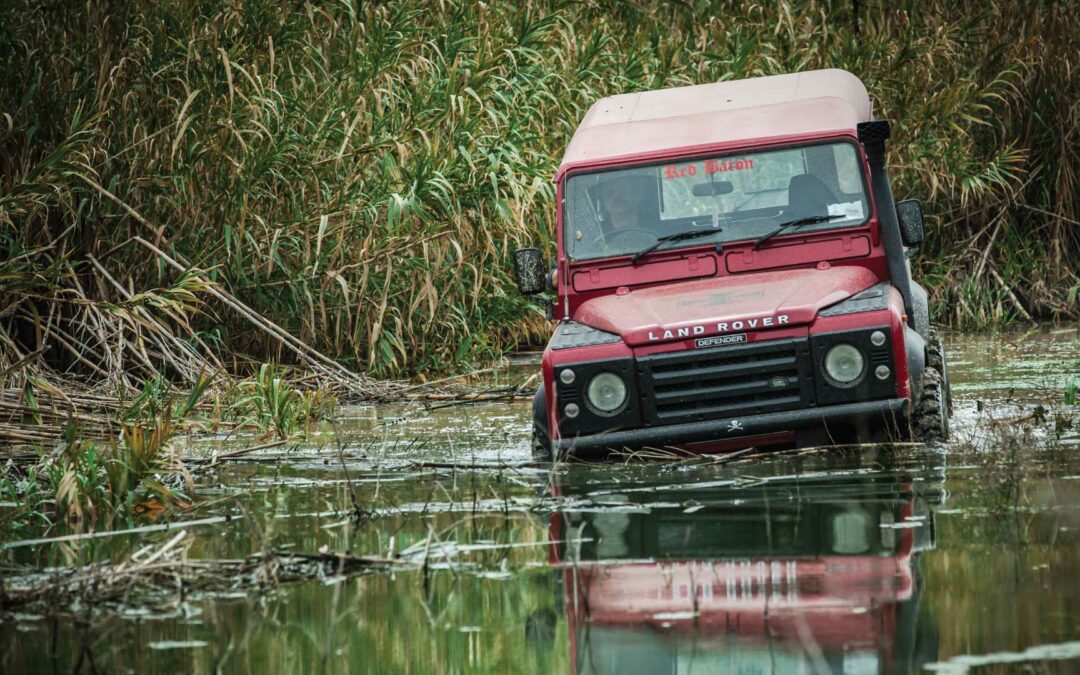
Your post offers a great introduction to the topic. For more in-depth analysis, this link might be of interest